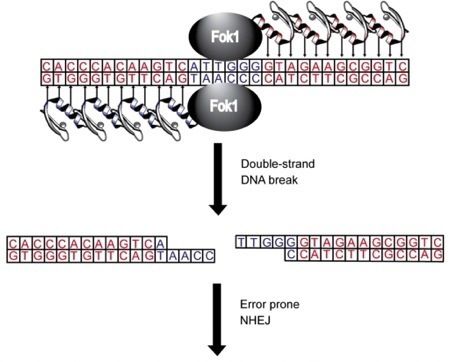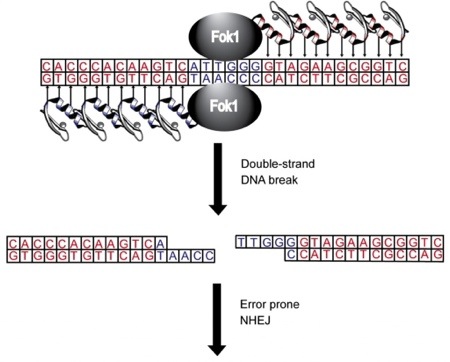Because all animal viruses initiate infection by binding to a receptor on the cell surface, this step has long been considered a prime target for antiviral therapy. Unfortunately, drugs that block virus attachment to cells have never shown much promise. Another approach, which is to ablate the receptor from the cell surface, is also problematic because these molecules have essential cellular functions. Removing one of the receptors for human immunodeficiency virus type 1 might be an exception.
HIV-1 must interact with two cell surface proteins to initiate infection: a T lymphocyte protein called CD4, and a second receptor, which can be one of two molecules called CCR5 or CXCR4. For many years it has been known that humans can survive without the CCR5 protein: from 4-16% of people of European descent carry the ccr5-delta32 mutation, that prevents the protein from reaching the cell surface. Individuals who are homozygous for ccr5-delta32 (the mutation is present in both copies of the gene) are resistant to HIV infection. Because the vast majority of HIV viruses that are transmitted are those that require CCR5 for cell entry, absence of the protein on the cell surface confers resistance to infection.
The key role of CCR5 in HIV infection in humans was further confirmed when an AIDS patient was given a bone marrow transplant from a donor with the ccr5-delta32 mutation. The patient has been free of HIV for years despite not taking anti-retroviral drugs.
These findings suggest that one possible therapy for AIDS would be to disrupt the ccr5 gene in patient lymphocytes. The development of gene-targeting technologies has brought this approach closer to reality. One approach uses zinc finger nucleases, which are artificial proteins made by joining a protein that can specifically bind DNA with an enzyme that can cleave DNA. A zinc finger nuclease can be designed, for example, to specifically cut within the ccr5 gene. When the cell tries to repair the cut, the gene may be damaged so that the CCR5 protein is no longer made (illustrated).








[…] HIV gets the zinc finger […]
[…] The key role of CCR5 in HIV …read more […]